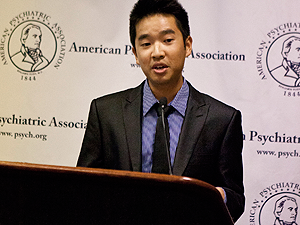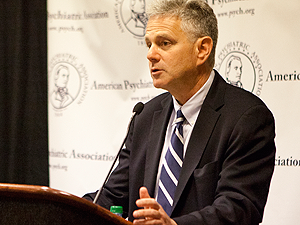The
“Time Machine” Approach.
As I have described in previous blogs, I view computer and
video gaming to be a toxic form of stimulation for children and teens with
autism spectrum disorder (ASD).
Computers and gaming exacerbate the core deficits of ASD by reinforcing
static and repetitive thinking. Thus, I believe it is critically important for
parents to limit their ASD child/teen’s access to technology. The approach I
recommend most I refer to as the Time Machine. As would follow from
the name, the Time Machine approach involves rolling back the clock on the
availability and use of technology in the home.
This approach involves a radical change in lifestyle that is
based on a commitment to limiting access to technology, while simultaneously
incorporating activities that expand cognitive, emotional, and social growth.
In the Time Machine approach the ASD
child/teen has access to:
1)
one television
2)
one DVD player
3)
access
to one desktop computer, referred to as the “work computer” (assuming
the child/teen is required by their school to use a computer to complete
homework).
4)
no
technology is allowed in a child/teen’s bedroom at any time
The “work computer” has word processing, power point, and
spreadsheet software. The work computer has a hard wired internet connection
{no wireless internet}. The “work computer” has filtering software installed
that prevents access to Facebook, MySpace, gaming websites, pornography, and
any other cyber destination that is used for entertainment.
Ideally, the Time Machine household does
not have:
1)
a
videogame console
2)
I pad/tablet technology
3)
handheld devices/Nintendo DS
4)
or a “gaming” computer.
With respect to access to technology or “screen time,” the
ASD child/teen has a maximum 30 minutes of television or
DVD time Monday through Thursday after all homework and household chores have
been completed.
A
maximum of 60 minutes of screen time is available to the ASD
child/teen Friday, Saturday, and Sunday after all homework and chores had been
completed. Parents can designate one night per week as “movie night” – during
this time the family selects a film collaboratively and watches the film
together.
In families with siblings the Time Machine approach can
be modified so that siblings have access to the Internet/social media, computer
based games, and video games, provided that all technology is confined to
one room that can be secured any time by closing and locking a door
(den, family room, or parental bedroom). In this scenario, siblings are not
allowed to have any form of technology in their bedroom, including laptops,
tablet technology, and smart phones.
It is strongly recommended that siblings adhere to a similar
entertainment screen time schedule as their ASD sibling. It is also strongly
recommended that use of social media, Internet surfing, instant messaging on
the computer, be considered part of their daily screen time allowance.
Obviously, this approach means siblings will have a
dramatically reduced amount of screen time compared to their peers. The
rationale for this approach is the amount of screen time currently consumed by
typical teens – which according to the Kaiser Family Foundation exceeds 7.5
hours per day (10.5 hours when switch tasking is factored in) -- is excessive
and leads to a variety of problems, not the least of which is the loss of the
art of conversation, the loss of time for self-reflection, a sedentary
lifestyle, weight gain, headaches, eye strain, and orthopedic problems such as
carpal tunnel syndrome.
As would logically follow from the parameters that are in
place for siblings, parents should make similar changes in their screen time
consumption. Parents may have a computer in their bedroom that is hardwired to
the Internet, a printer, and a television and DVD player. Clearly, it is best for parents
to model healthy “online” and “offline” behavior -- which means a balanced and
integrated lifestyle.
For many parents, the thought of significantly reducing
their screen time is anxiety provoking and is generally met with various
arguments focusing on why maintaining a Wi-Fi connection, tablet technology,
Facebook accounts, and Internet research, is an essential and necessary part of
family life in the 21st century.
Although it is certainly true technology has become woven
deeply into the fabric of family life in the 21st century, it is by no means
the case that our relationship to technology is leading to a more satisfying,
happy, and productive family life. It is therefore recommended that parents try
for a period of a minimum of 60 days a reduced “screen time diet” and a
simultaneous commitment to expanding family time, outdoor activities, and
involvement in a wide range of enrichment and recreational activities.
Given the current consumption of screen time and the reliance
on technology for entertainment and communication, it has become very difficult
for parents to remember what types of activities and events they were engaged
in prior to the advent of multiple computers, gaming systems, tablets, smart
phones, etc.
The following is a list of activities that parents can
integrate into their daily lives: family dinners, family reading time,
creating a family tree/genealogy, hiking, biking, fishing, renting a boat,
listening to music, attending a live concert, drawing/painting, pottery/clay
play, going to museums, writing a play,
creating a short film, photography, writing poetry, gardening, cooking,
housecleaning, home repairs, animal care, volunteer activities/community
service, craft activities, puzzles, board games, science experiments,
astronomy, window shopping, food shopping, going to the beach/boogie boarding,
swimming, bowling, camping, creating memory books/scrapbook, window shopping,
picnics, water played/squirt guns/water balloons, involvement in local or global
political movements, support of heal the bay/green groups, participating in
homeless shelter food program.




